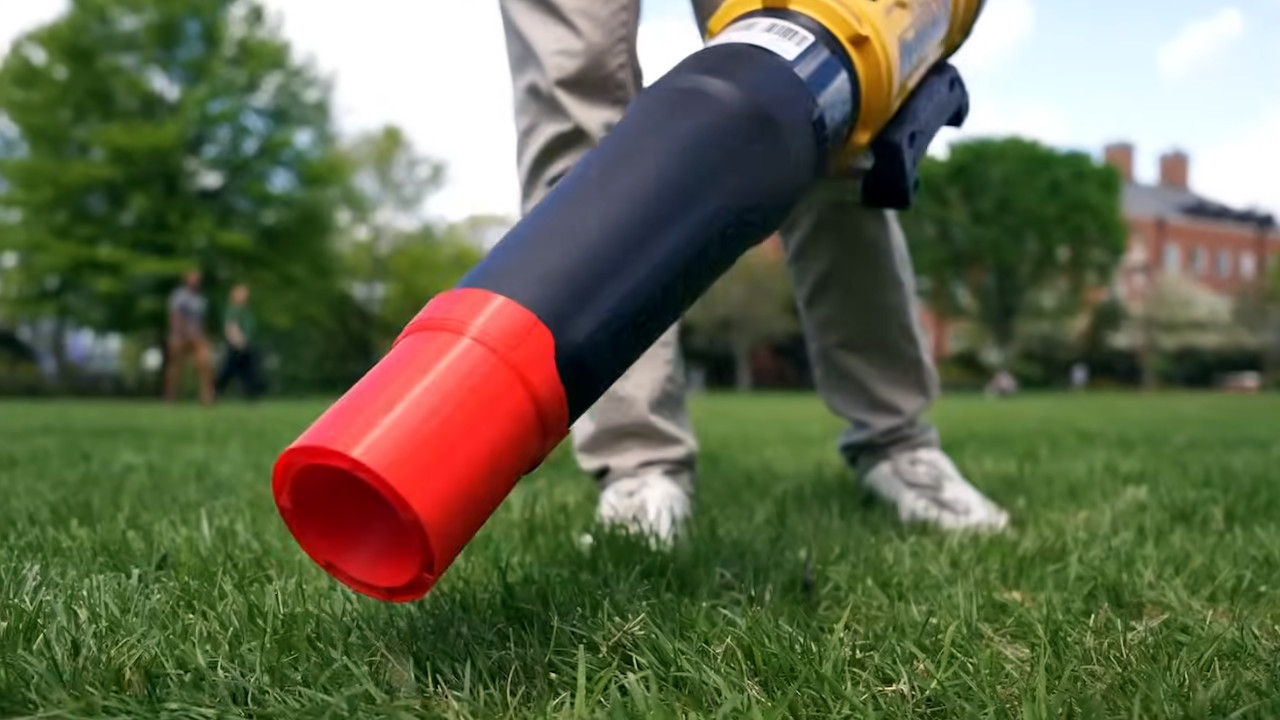Electric leaf blowers are already far quieter than their gas-powered peers, but they still aren’t the kind of thing you’d like to hear first-thing on a Saturday morning. Looking to improve on the situation, a group of students from Johns Hopkins University have successfully designed a 3D printed add-on that manages to significantly reduce the noise generated by a modern electric leaf blower without compromising the amount of air it’s able to move. The device has proven to be so successful in tests that Stanley Black & Decker is looking to put a commercial version of the device on store shelves within the next two years.
The team says the first part of the problem was identifying where the noise was actually coming from. After taking an example leaf blower apart and studying all of its moving components, they determined that most of the noise produced wasn’t mechanical at all — what you’re actually hearing is the complex cacophony of high-speed air rushing out of the nozzle. With this knowledge in hand, they isolated the frequencies which were the harshest to the human ear and focused on canceling them out.
We’re assuming the pending commercial venture with Stanley has prevented them from releasing too much technical information about the gadget. But from what was published on the university’s news site Hub and the video below, it’s explained that a portion of the air is redirected into channels printed into the device, which slows it down before dumping it back into the stream.
To be clear, this doesn’t eliminate the noise completely. In a side-by-side comparison, the suppressed blower is still fairly loud. But with the shriller tones removed from the mix, it’s at least a less annoying noise.
As designed, the printed suppressor is meant to attach to an otherwise unmodified blower. But we’re willing to bet that Stanley instead plans on implementing the technology directly into the nozzles of their future blowers. That way, rather than selling you a simple plastic add-on, they can get you on the hook for a whole new blower.
That is, unless somebody out there decides to come up with their own DIY version. We’ll keep an eye on the tip line should anyone want to share with the class.











